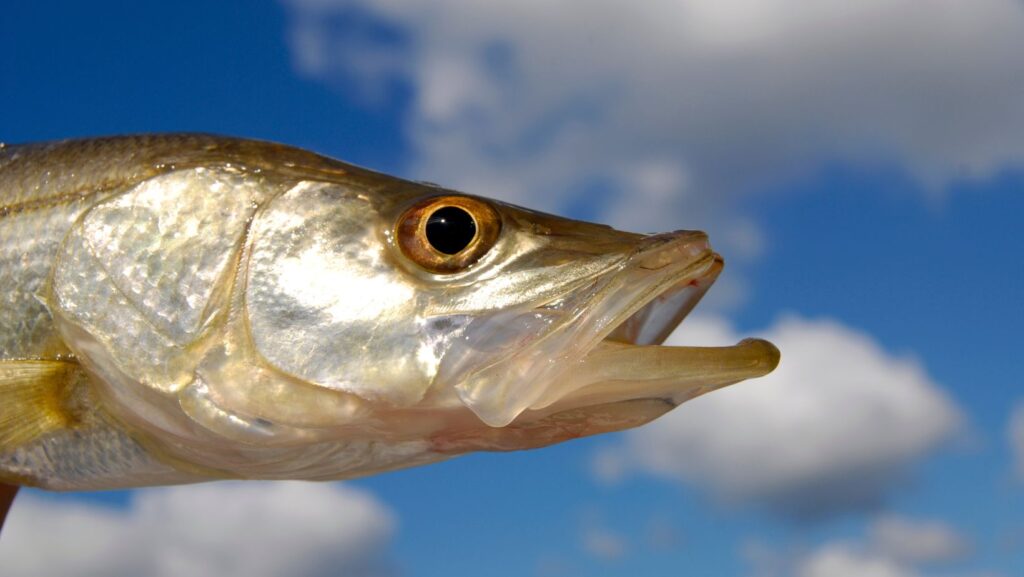I’ve spent countless hours on the water, rod in hand, waiting for the adrenaline rush that comes when a snook takes the bait. It’s not just a fish, it’s a challenge. A snook is a prize that requires strategy, patience, and a bit of luck.
Snook Fishing

Studying and interpreting the behavior of snook stands as one prime aspect of snook fishing. The snook’s behavior can significantly influence the odds of a successful catch; they tend to hang around structures such as roots, rocks, pylons, or mangrove trees. This behavior stems from their need for cover from predators and their hunting habits. Snooks are nocturnal feeders, meaning they’re most active during the dark hours. Understanding these behaviors can help anglers be at the right place at the right time for a catch.
Despite recognizing the behavior, your success hinges largely on employing the right fishing techniques. Select gear that’s fit for the conditions. A medium-heavy rod, efficient reel, and strong line usually suffice since snook are known fighters. Bait selection is also crucially important. Snooks feed on a variety of offerings like mullet, shrimp, and crab. Artificial lures such as scented jerk baits, spoons, and plugs may also be exploited successfully.
The Snook Species
Into the waters, we dive deeper. Allow me to take you through the world of the Snook species. These fascinating fish belong to the Centropomidae family. Population dwells mainly in the warm waters of the Atlantic, adjacent to Florida and Texas.
Snook fish come in five distinct types. The Common Snook, the Small-scaled Fat Snook, Swordspine Snook, Tarpon Snook, and the Large-scaled Fat Snook exemplify these types. Each holds unique traits worth noting.
The Small-scaled Fat Snook, on the other hand, dominates estuarine environments. Popularity is not comparable to the Common Snook, but catching these demands a fair share of tactical approach and skill. You’d find them mainly in the mangroves, given they fall to about 20 inches long and 8 pounds.
The other three species include the Swordspine, Tarpon, and Large-scaled Snook, the latter holding the record for being the largest. Opportunities to cast a line for these remain scarce, but when successful, catches bestow a feeling of accomplishment quite unparalleled.
Techniques and Strategies

Building upon the understanding of snook behavior, it’s important to discuss the various techniques and strategies that increase the probability of success during snook fishing. Although it may seem complex at first glance, mastering these methods serves as a game-changer in snook angling.
In clear waters, sight fishing marks a viable approach. This technique involves spotting the snook before casting, thereby enhancing the targeting precision. For example, beaches and flats are the common areas where I typically sight fish for snook.
Live bait proves efficient in attracting snook, provided it’s used strategically. Pilchards, mullet, and shrimp are a few examples of live bait that snook often find irresistible. The lively movement of these baits in water triggers the hunting instinct in snook. So, I often use live bait for a fruitful snook fishing session.
As snooks prefer to stay near underwater structures, fishing around these areas improves chances of a catch. Mangroves, docks, and bridges, for instance, generally shelter snook. Therefore, I always bear in mind to explore these structured areas during my snook fishing ventures.
Conservation and Regulations

I can’t stress enough the importance of conservation and adherence to regulations in snook fishing. It’s not just about the thrill of the catch, but also about respecting and preserving the environment we share with these magnificent creatures. Always remember to follow local rules and regulations, ensuring snook populations thrive for future generations of anglers.
Snook fishing is a complex game of strategy, skill, and knowledge. It’s about understanding their behavior, choosing the right gear and bait, and adapting to variables like tide, time, and location. So, keep exploring, keep learning, and most importantly, keep enjoying the art of snook fishing.

